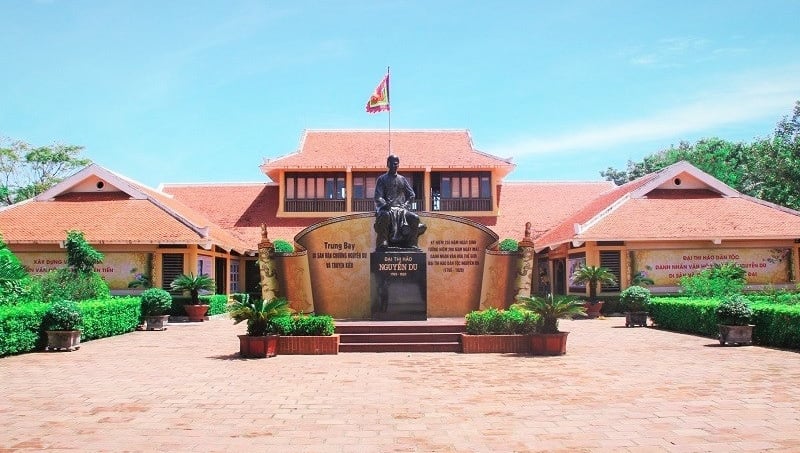Nghi Xuan District (Ha Tinh Province): Solutions for Building New Rural Areas Linked with Preserving and Promoting Traditional Cultural Values
Nghi Xuan District is located in the northern part of Ha Tinh Province, covering an area of more than 222 square kilometers with a population of over 100,000 people. The district consists of 17 communes and 2 towns. Before 2010, Nghi Xuan was consistently one of the province's poorest districts. When the National Target Program on New Rural Development was launched, the Party Committee and the people of Nghi Xuan clearly identified it as the path, the goal, and the only solution at the time to lift the district out of poverty and to build a prosperous and happy life for its residents.
NEWS
Anh Cao (Document from the National Conference Summarizing 10 Years of Implementing the National Target Program on New Rural Development for the 2010–2020 Period)
12/28/20203 min read


Nghi Xuan District is located in the northern part of Ha Tinh Province, covering an area of more than 222 square kilometers with a population of over 100,000 people. The district comprises 17 communes and 2 towns. Prior to 2010, Nghi Xuan was consistently one of the poorest districts in the province. When implementing the National Target Program on New Rural Development, the Party Committee and the people of Nghi Xuan clearly identified this as the pathway, the goal, and the only solution at that time to develop the district, lift it out of poverty, and build a prosperous and happy life for its residents.
Historically, Nghi Xuan has been known as a "land of spiritual and talented people," with numerous historical sites, famous landscapes, and distinguished figures across various eras. This land still preserves many relics and tangible and intangible cultural heritages, such as archaeological sites dating back 4,000 to 5,000 years like Phoi Phoi – Bai Coi; a system of hundreds of temples and pagodas, many of which are 300–400 years old, including Cui Temple, Hoi Thong Communal House, and the Special National Relic Site of the World Cultural Celebrity – the Great Poet Nguyen Du, author of The Tale of Kieu, a masterpiece recognized by UNESCO as an invaluable asset of humanity, encapsulating the essence of the Vietnamese language.
Nghi Xuan is also proud to be one of the cradles of Ca Tru singing, a traditional art form recognized by UNESCO as an intangible cultural heritage. With a geographical position between National Highway 1 and the coastal road, bordered by Vinh City to the north and Hong Linh Town to the south, the district enjoys favorable conditions for trade and for developing its cultural potentials linked to coastal tourism.
Recognizing its potential and advantages, the Party Committee and the people of Nghi Xuan set the goal of building a new-style rural district while preserving and promoting traditional cultural values.
In reality, this has proven to be the right direction. Culture is considered the spiritual foundation of society, serving both as a goal and a driving force for socio-economic development. Fostering cultural development means reinforcing the spiritual foundation of society. Without a progressive and healthy spiritual foundation, sustainable socio-economic development cannot be achieved. Culture is not only the result of economic growth but also a catalyst for it. Cultural factors must be closely tied to all aspects of social life — politics, economy, society, law, and discipline — transforming into the most vital internal resources for development.
However, for a district like Nghi Xuan, which initially had poor and insufficient infrastructure, with an average of only 3–5 out of 19 new rural criteria met, the task of building new rural areas while preserving and promoting traditional cultural values was extremely challenging. To achieve this goal, Nghi Xuan District focused on implementing several key solutions:
First, mobilizing the participation and maximizing the strength of the people, making them the true driving force behind rural development. The new rural development movement can only succeed if the people are the main actors. Among all resources for building new rural areas, the greatest and most crucial resource is the people. This resource can only be fully leveraged by empowering communities to take ownership of the rural development process.
President Ho Chi Minh once said, "Without the people, even easy tasks are difficult; with the people, even the most difficult tasks can be accomplished." In any endeavor — especially in building new rural areas — the participation of the people is not just necessary; they must play the central role.
Thus, residents must be the ones to plan, propose solutions, and participate in all assigned tasks. To achieve this, the key is starting with the officials. Officials must proactively engage with the people, listen to them, discuss matters together, guide and assist villages and hamlets in implementing specific tasks. Once public consensus is achieved, the resulting strength is immense.
In practice, once the people are engaged, obstacles in building rural infrastructure and improving cultural life are fundamentally resolved. Nghi Xuan District has developed a network of clean, green, and beautiful inter-village and inter-commune roads, model residential areas, exemplary gardens, cultural facilities, and vibrant community cultural activities. Without the people’s consensus, participation, and contributions in both labor and resources, no budget or external force could have achieved or sustained these developments.
Over the years, Nghi Xuan has performed remarkably in this regard, turning the new rural development movement into a mass movement. Tens of thousands of labor days, hundreds of hectares of land, and hundreds of billions of dong have been mobilized; thousands of kilometers of rural roads have been paved with asphalt or concrete; electricity, roads, schools, clinics, and commune offices have been repaired, upgraded, or newly built to modern, standardized conditions.
Especially notable is the system of online meeting rooms extending to each commune and town. Every village has a spacious cultural house equipped with standardized facilities, including computers with internet access and shared bookcases to meet information needs and promote a reading culture, thus contributing to the development of a learning society.


